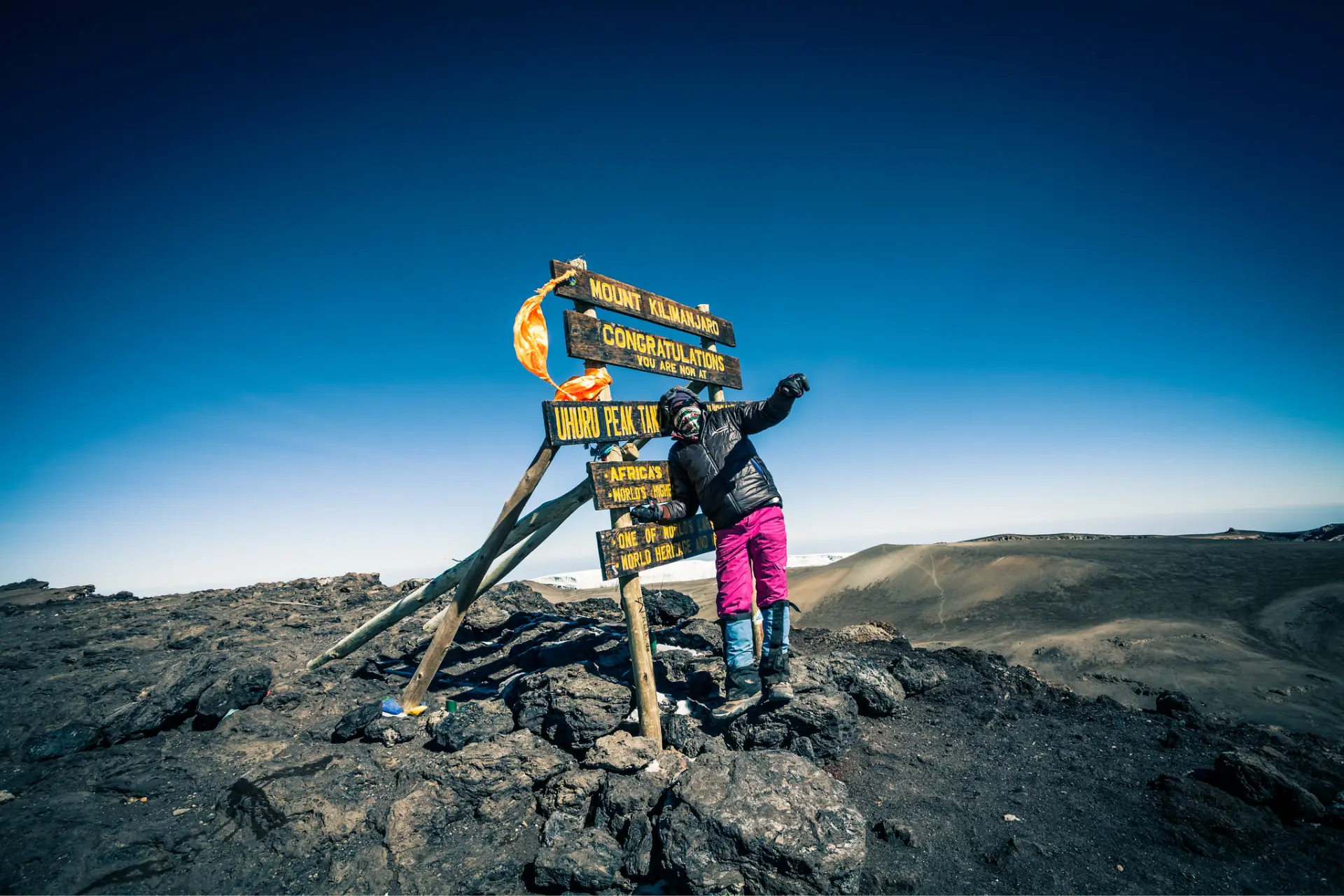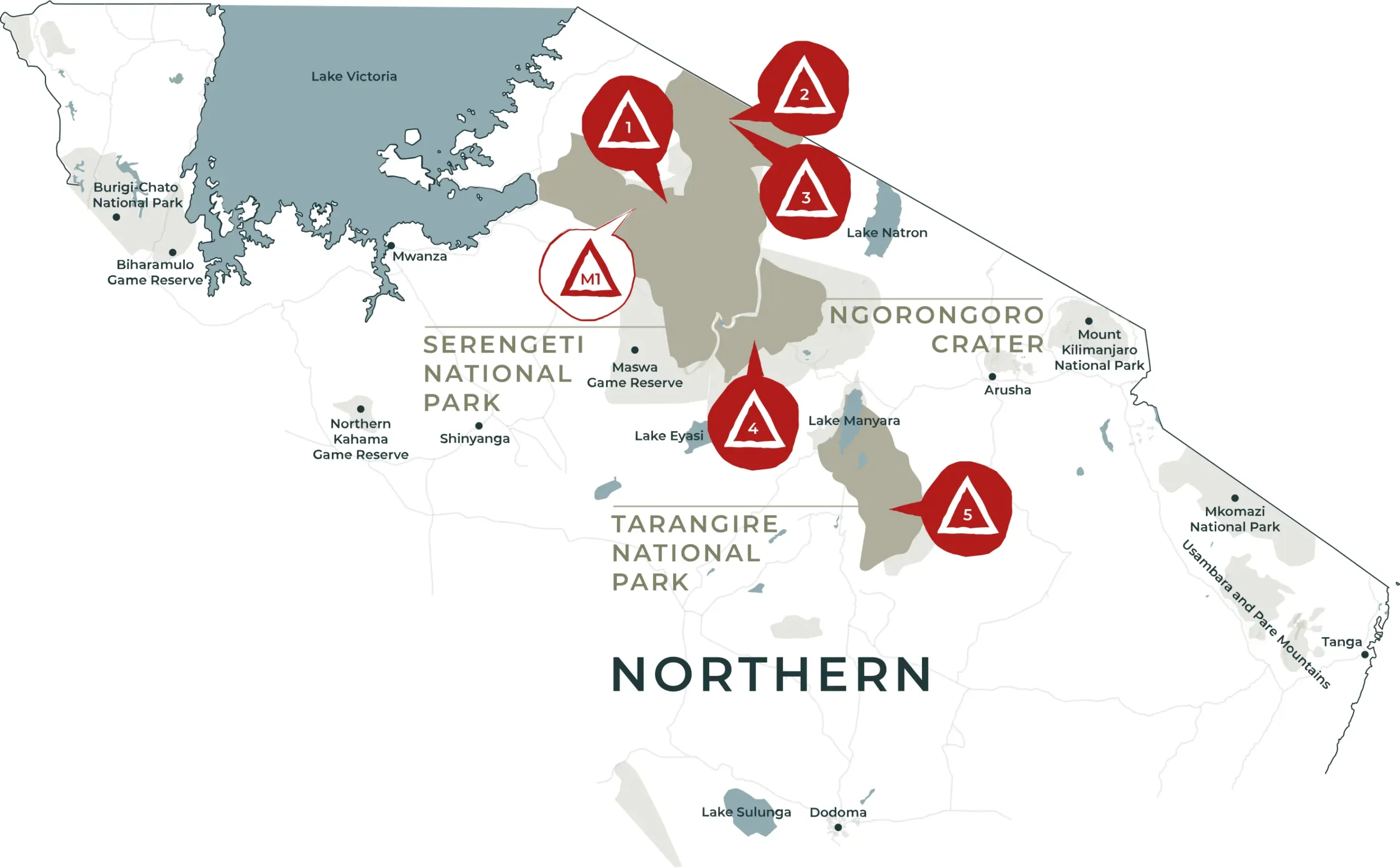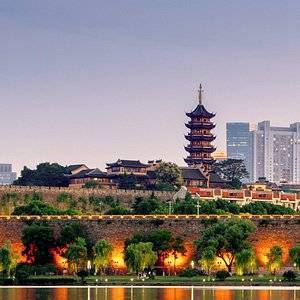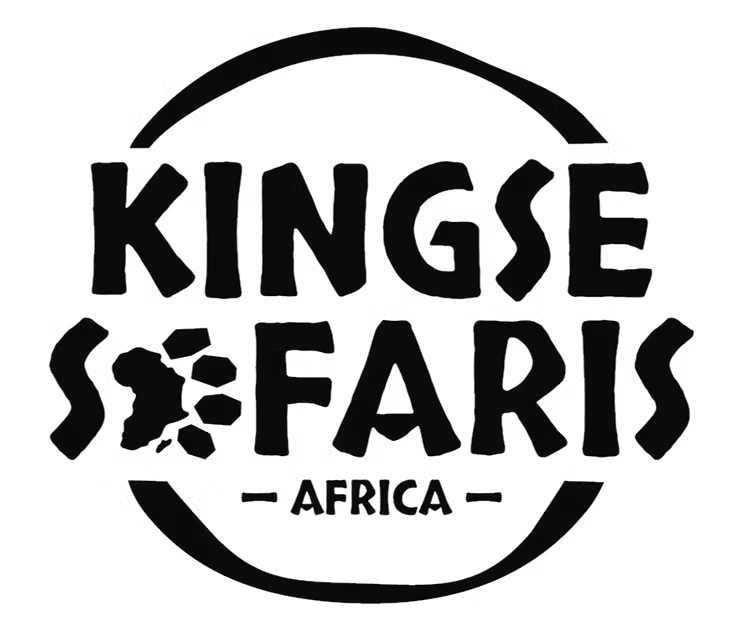ADVENTURE
Mount Kilimanjaro Climbing
Conquer Africa’s highest peak with unmatched views and lasting triumph.
Mount Kilimanjaro rises proudly in Tanzania, standing 19,341 feet above sea level as Africa’s tallest mountain. Known worldwide as a bucket-list adventure, it offers diverse routes, breathtaking scenery, and a chance to experience Tanzania’s natural beauty and culture while summiting one of the seven summits.
Altitude
Reaches 5,895 m
Trekkers
35,000 yearly
Routes
7 main trails
Status
Tallest African mountain
Altitude
Reaches 5,895 m
Trekkers
35,000 yearly
Routes
7 main trails
Status
Tallest African mountain
Climbing the Roof of Africa with Expert Guidance

Treks are designed to suit different preferences, with seven main Kilimanjaro routes offering diverse landscapes and difficulty levels. From the classic Marangu path to the scenic Lemosho and the challenging Umbwe, each route presents a unique perspective of the mountain.
The best climbing conditions occur during the dry months, specifically from December to March and June to October. With proper gear, preparation, and guidance, you’re ready for the adventure of a lifetime.
Mount Kilimanjaro welcomes adventurers of all ages, from young trekkers to older climbers seeking the thrill of summiting Africa’s highest peak. What matters most is determination and the proper guidance.
Altitude is the real challenge, but with careful planning and professional support, every step becomes achievable. Our highly skilled mountain guides bring decades of combined experience, ensuring safety, encouragement, and the best chance of reaching the summit.

Climbing Routes
Find Your Climbing Route That Fits You the Best
From scenic forest trails to alpine ridgelines and quiet high camps, every Kilimanjaro route offers a different way to reach the summit. Choose the one that fits your spirit and stride.
Everything You Need to Know About Climbing Kilimanjaro
Climbing Kilimanjaro is a once-in-a-lifetime adventure—but it also comes with many questions. Here’s a detailed guide to the most common things travellers ask when preparing for the climb.
How do I choose a Kilimanjaro tour operator?
Choosing the right tour company is one of the most important decisions you’ll make. Look for a registered and experienced operator that has good reviews, professional mountain guides, and follows proper safety practices. A good company should also take care of its crew—fair wages, reasonable porter loads, and appropriate meals. Don’t just go with the cheapest option.A reliable operator offers better support, better equipment, and a safer experience on the mountain.
How much does it cost to climb Kilimanjaro?
The cost of climbing Mount Kilimanjaro usually ranges between $2,000 and $5,000. This depends on the route, the number of days, group or private climbs, and the services included. Cheaper companies may cut corners on staff welfare or safety equipment. A reasonable price usually includes park fees, experienced guides, meals, tents, porters, and airport transfers. Always ask for a detailed cost breakdown before booking.
When is the best time to climb Kilimanjaro?
The best time to climb is during the dry seasons. January to mid-March and June to October offer the most stable weather and clearer views. These months are ideal for achieving summit success and enjoying comfort. The long rains (late March to May) and short rains (November) make the trails slippery and reduce visibility. While climbing during the rainy seasons is possible, it’s not ideal unless you’re prepared for wet, muddy, and more difficult conditions.
Which is the best route for climbing Kilimanjaro?
Each route has its strengths. The Lemosho and Northern Circuit routes are known for beautiful scenery and good acclimatization. Machame is the most popular, offering a dramatic and varied landscape. Rongai is less crowded and drier, great for those seeking quiet trails. Marangu is the only route with hut accommodations, but it offers less time for acclimatization. Your choice should depend on your fitness, time, and comfort level with altitude.
How many days should I spend on the mountain?
Climbing Kilimanjaro should not be rushed. The longer you spend on the mountain, the better your chances of acclimatizing properly and reaching the summit safely. Most climbers choose a seven or 8-day route. These extra days allow your body to adjust gradually to the altitude and reduce the risk of altitude sickness. Routes shorter than 6 days often lead to lower summit success and more health issues.
What kind of weather should I expect?
The weather on Kilimanjaro changes dramatically with altitude. You’ll experience five different climate zones—from tropical rainforest at the base to arctic conditions at the summit. Days are warmer on the lower slopes (around 20–27°C / 68–80°F), while nights are much colder at higher altitudes. Near the summit, temperatures can drop as low as -20°C (-4°F), especially before sunrise. Be ready for sun, wind, rain, and freezing temperatures—all in one climb.
What gear do I need to bring?
You’ll need proper gear to stay warm, dry, and comfortable. Key items include waterproof hiking boots, thermal base layers, an insulated jacket, waterproof pants and jacket, gloves, a hat, a warm sleeping bag, a headlamp, and a daypack. The support team carries your large duffel bag (up to 15 kg), while you have only a small daypack with essentials like water, snacks, and a jacket. Your operator usually provides a complete packing list.
How should I train and prepare for the climb?
You don’t need to be an athlete, but you must be physically prepared. The best way to train is by doing long-distance hikes with elevation gain while carrying a backpack. Build your endurance 2–3 months before the trip with regular walking, stair climbing, strength training, and cardio. Aim for 4–6-hour hikes at a steady pace. Most of all, get used to walking uphill and downhill for several days in a row.
Is it safe to climb Kilimanjaro?
Kilimanjaro is considered a non-technical mountain, but the high altitude can be risky. Good operators take safety seriously. Trained guides monitor your health every day using pulse oximeters and ask questions to check for signs of altitude sickness. Oxygen cylinders, first-aid kits, and emergency evacuation plans are standard. If you climb with an experienced team and follow their advice, the climb is safe and well-managed.
Why are some Kilimanjaro climbs much cheaper than others?
If the price looks too good to be true, it probably is. Budget operators often cut costs by paying porters unfair wages, overloading staff, using worn-out gear, or skipping proper meals and safety checks. These practices are not just unethical; they also affect your overall experience. Reputable companies charge more because they take care of their team, use better equipment, and focus on your safety and success.
Creating Your Dream Safari, The Way You Want it
Kingse Safaris Africa offers customized tours tailored to your needs. Everything about your trip can be altered to suit your travel style, from the activities to the schedule. Join us and design your dream journey with us!







